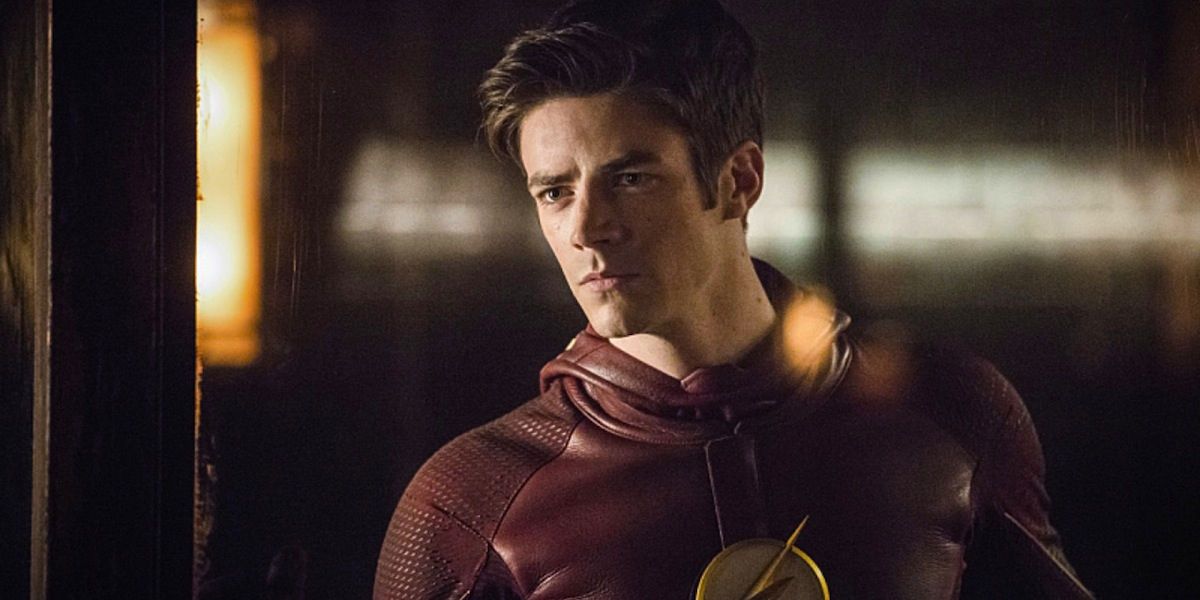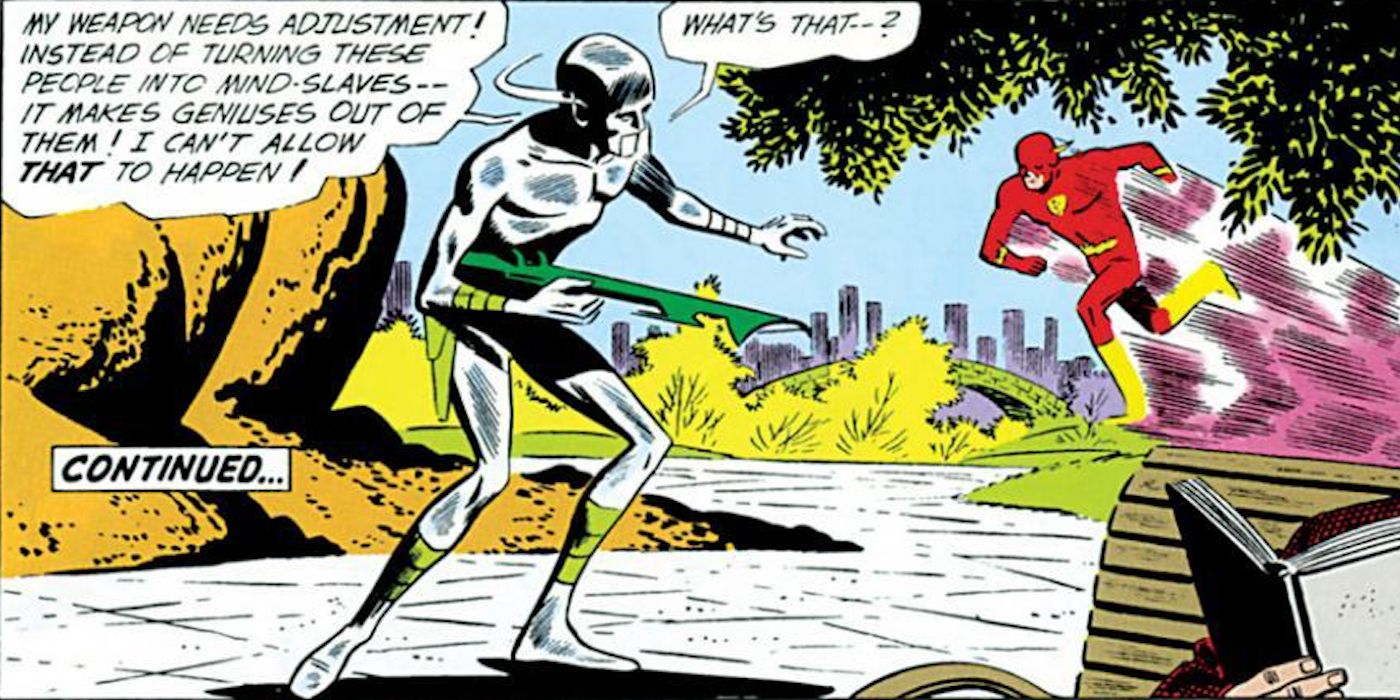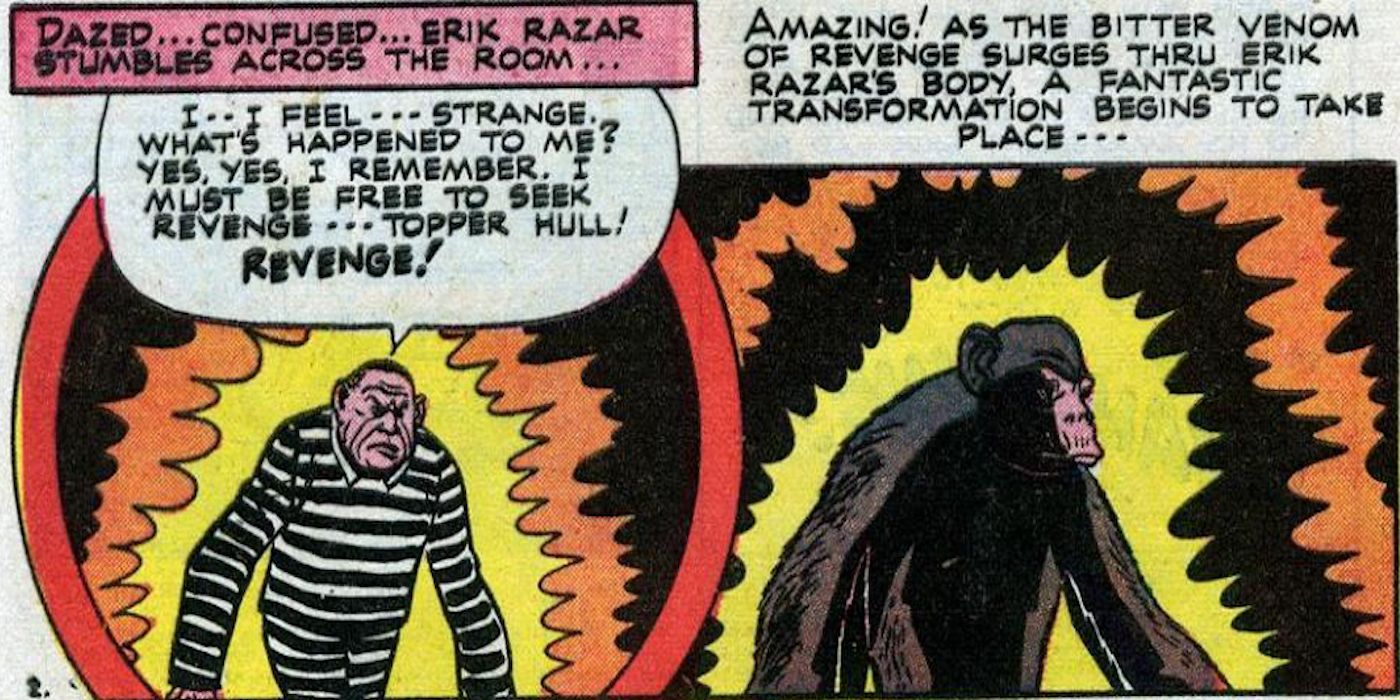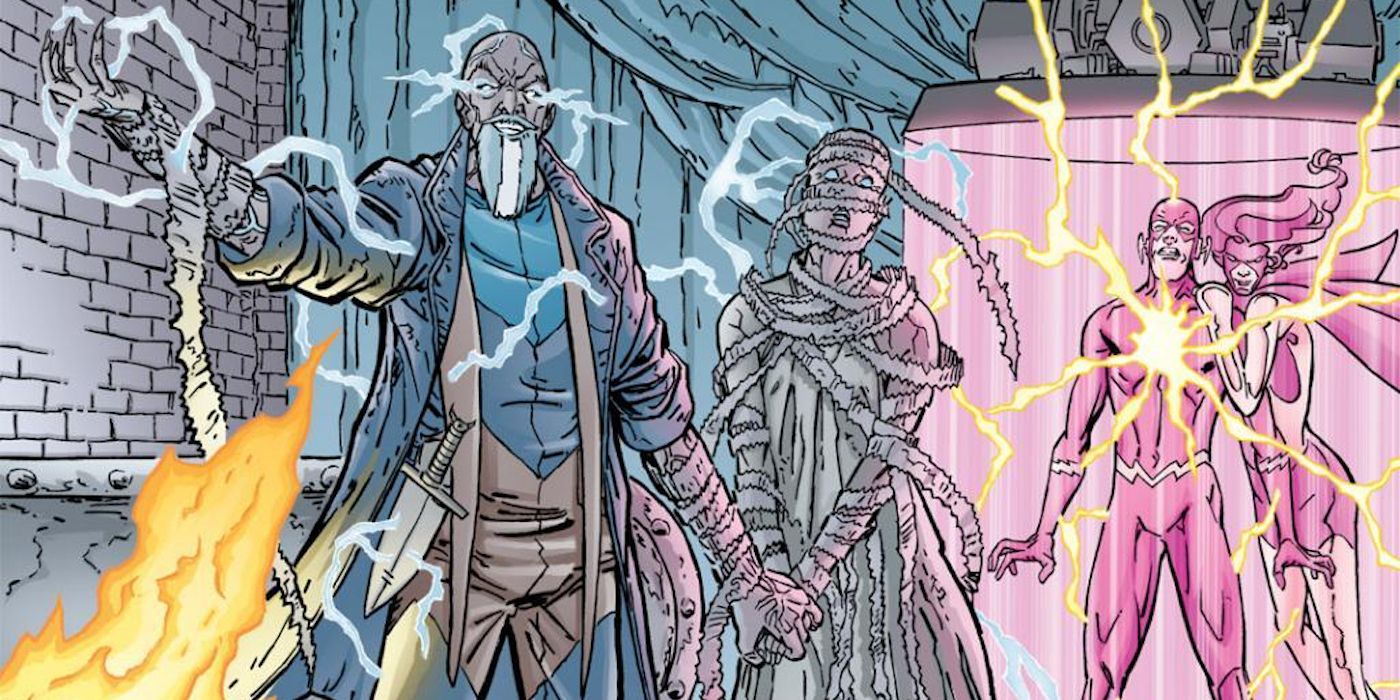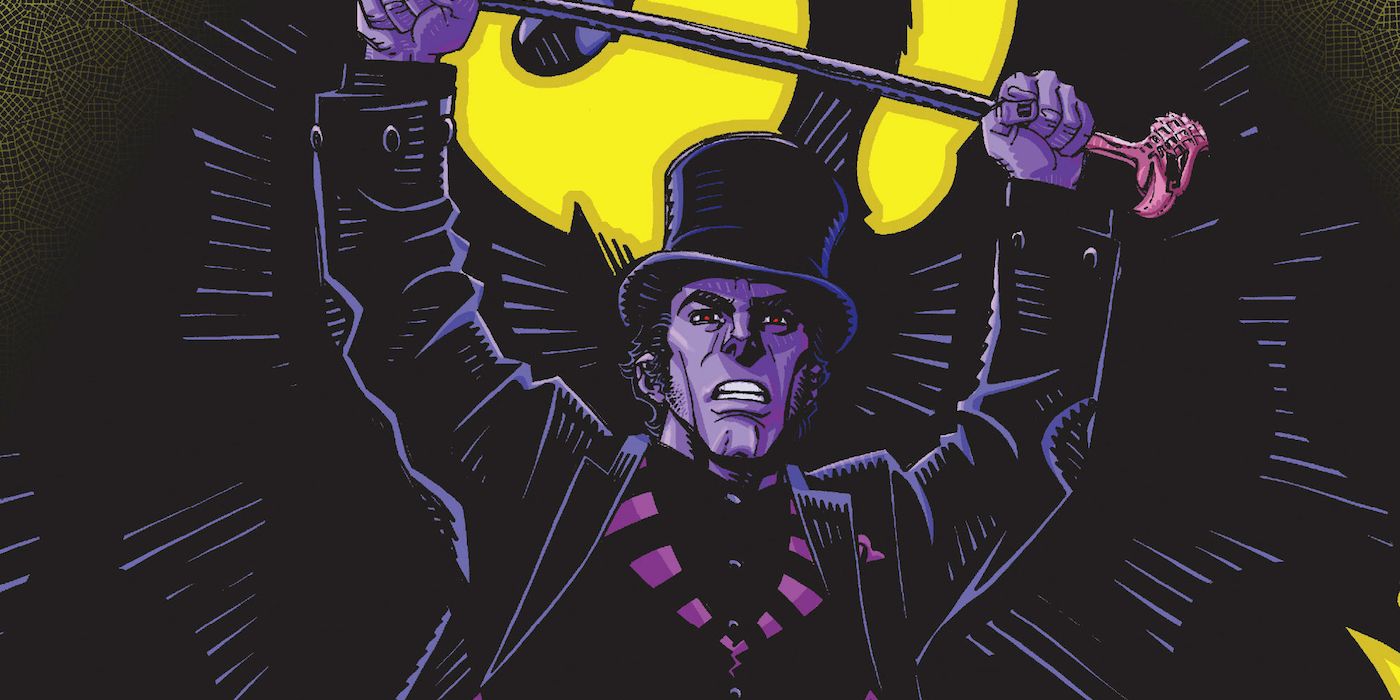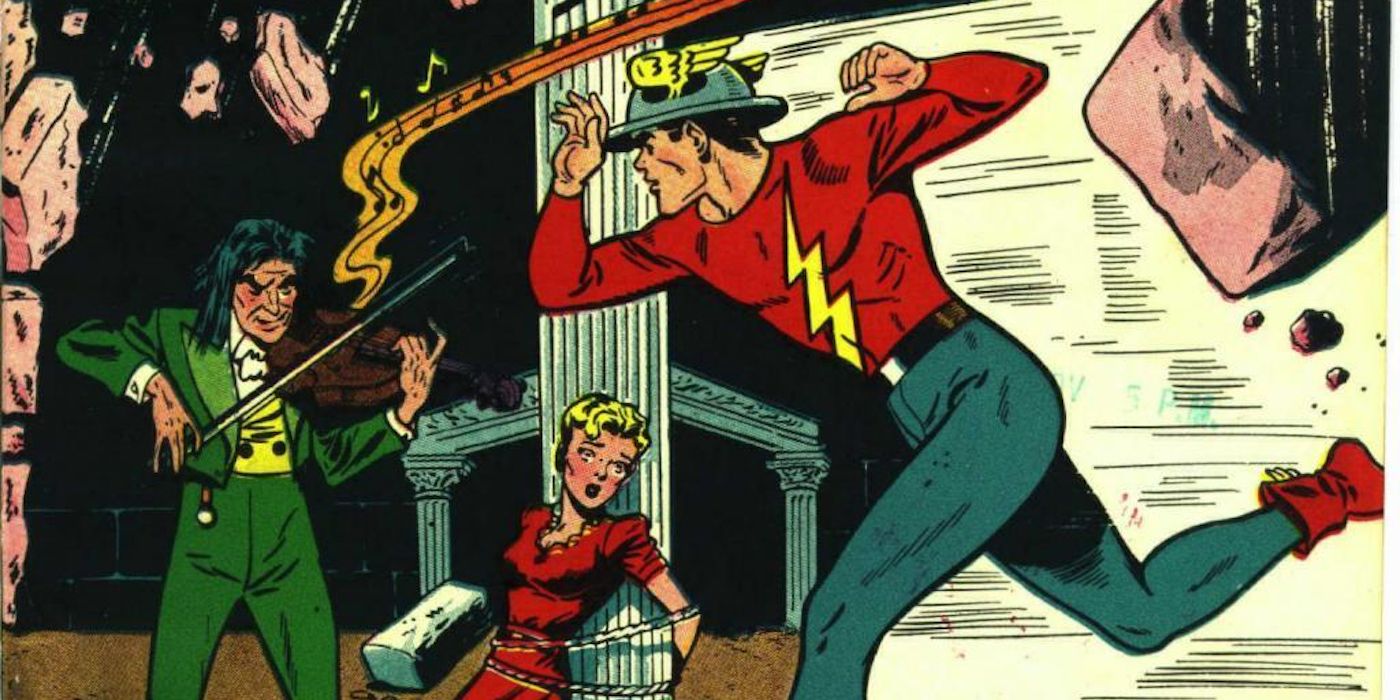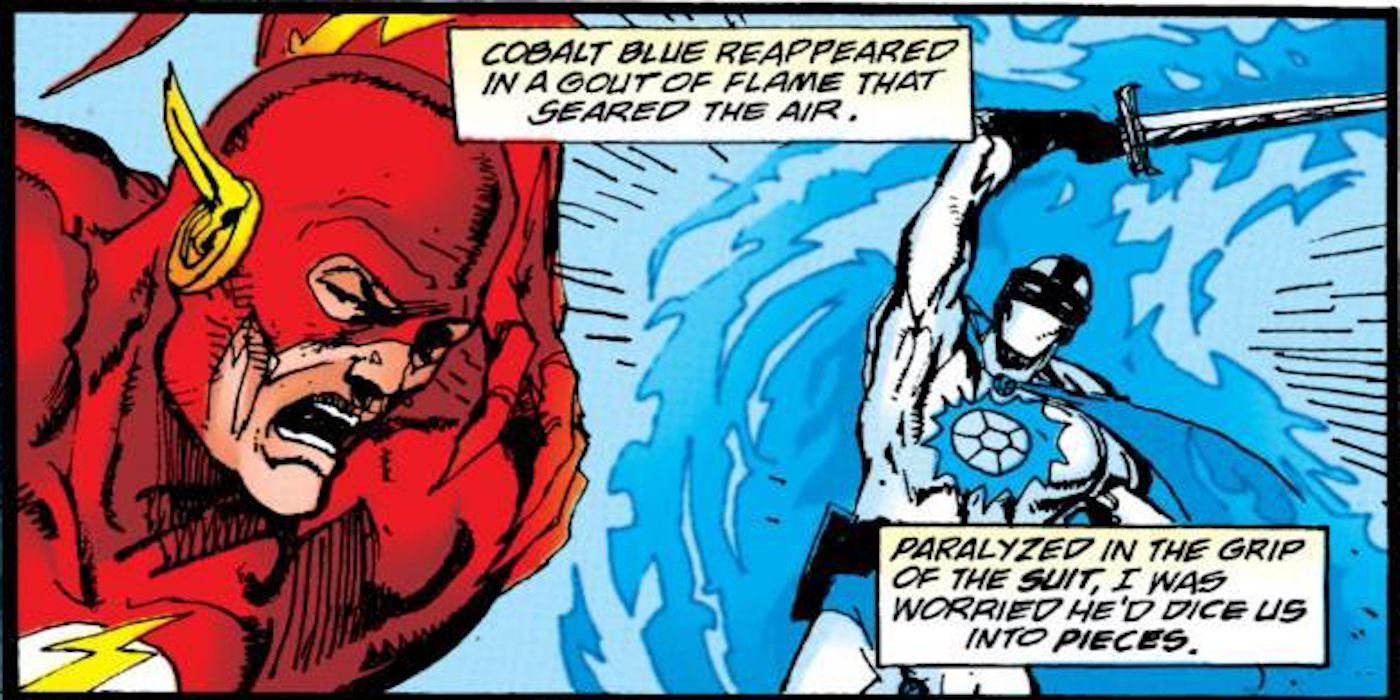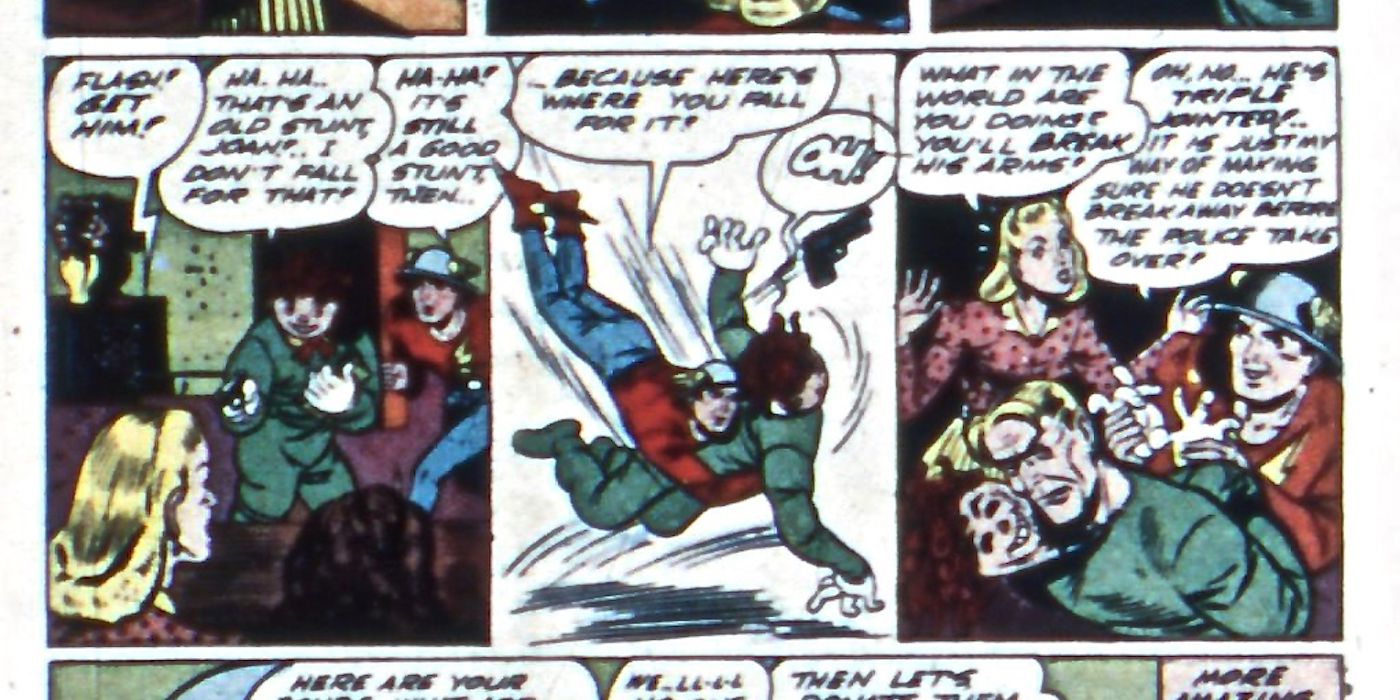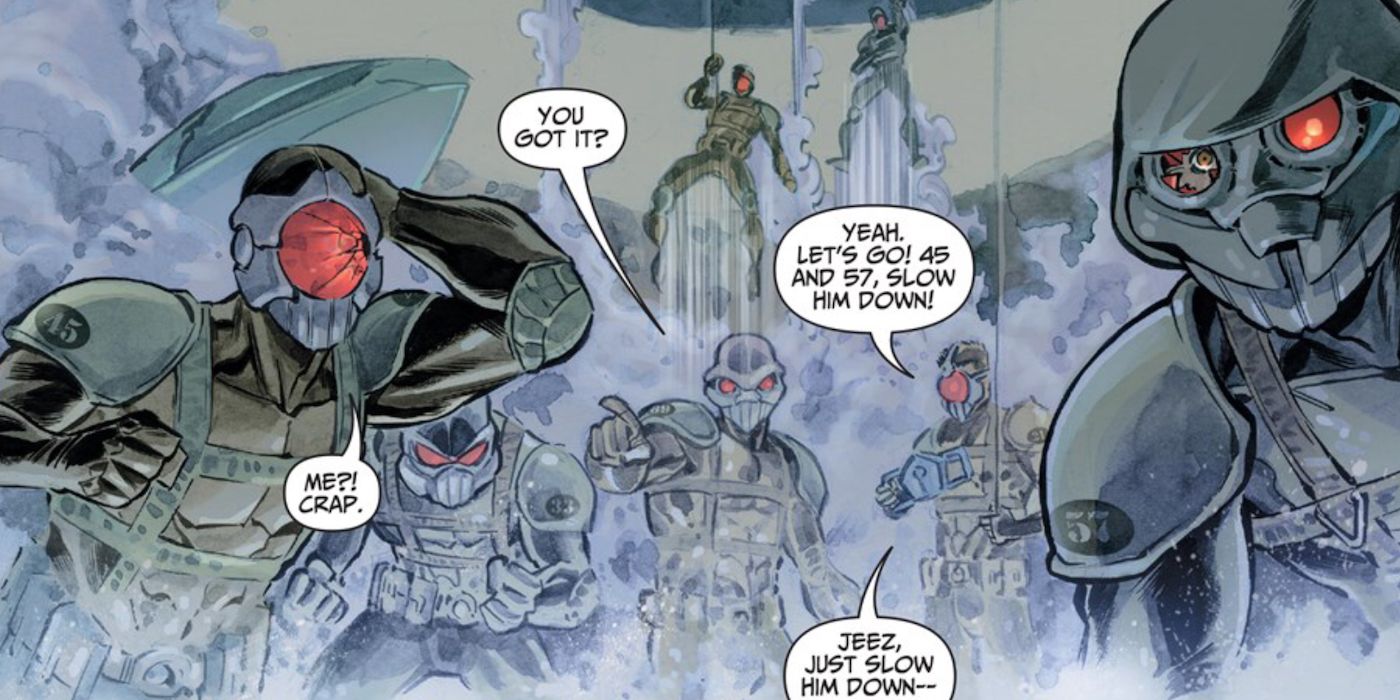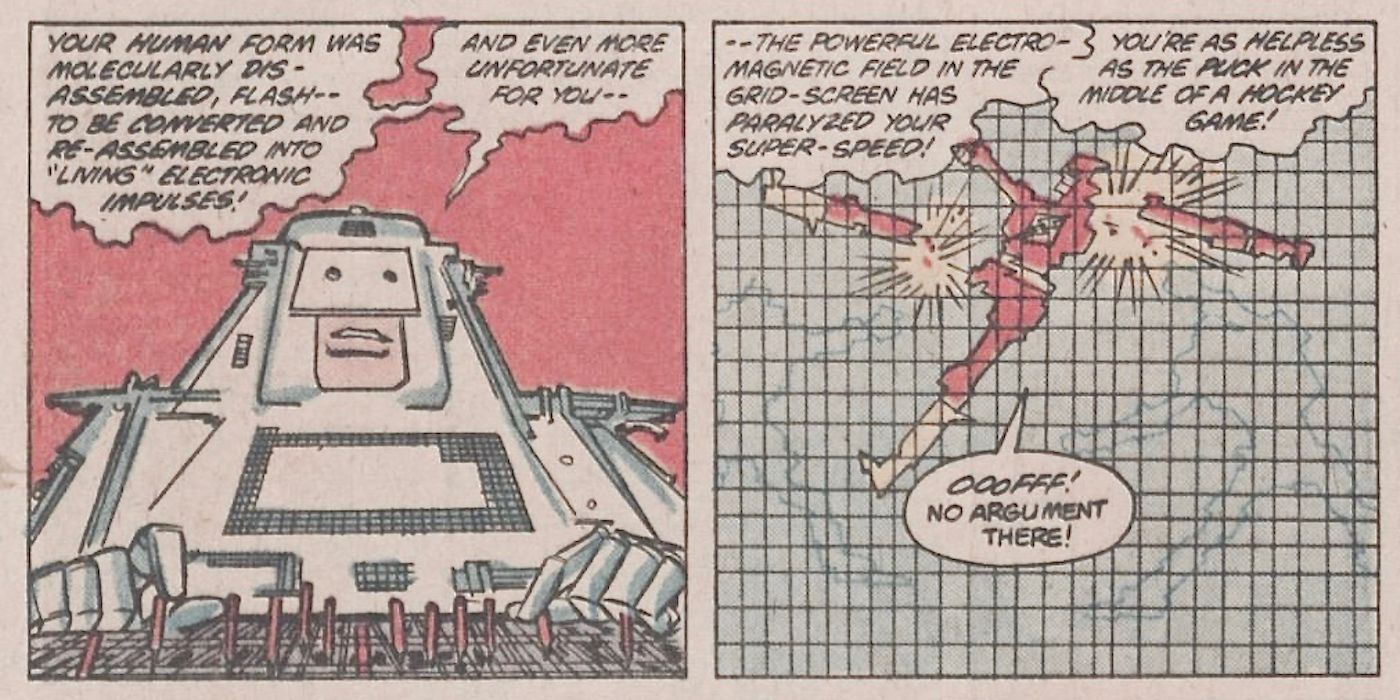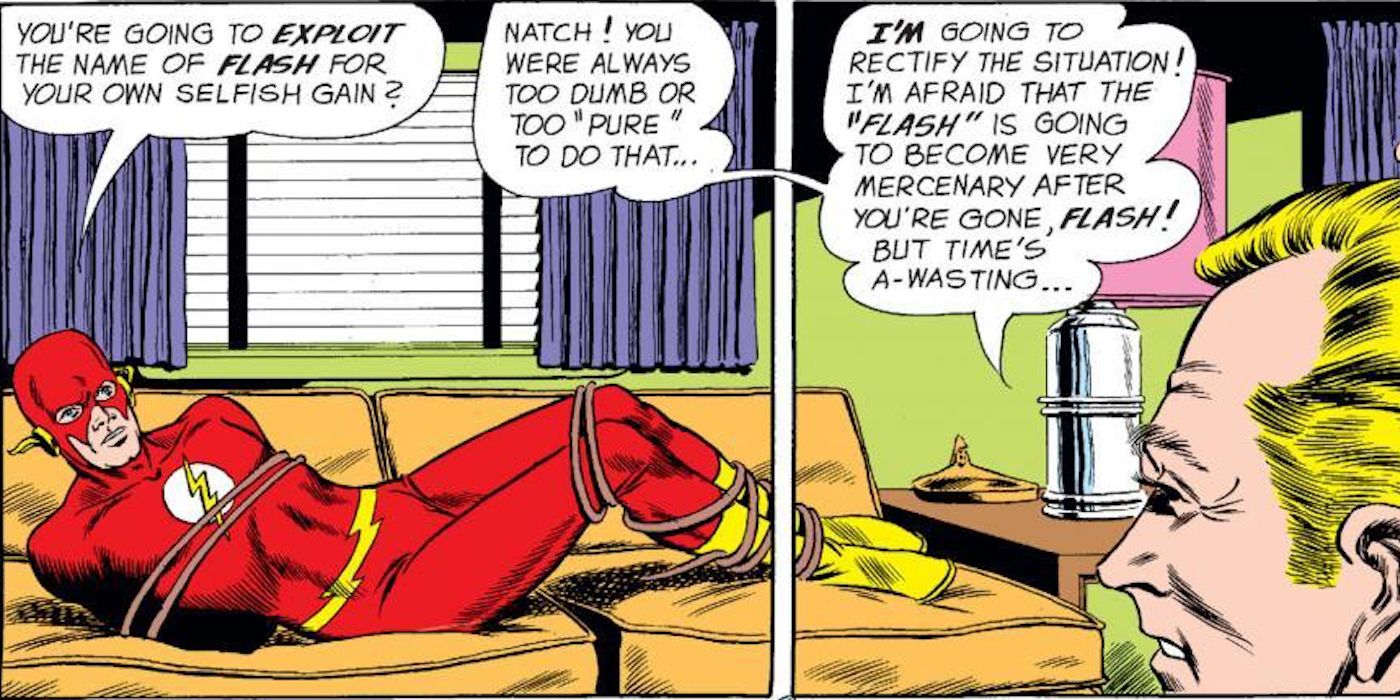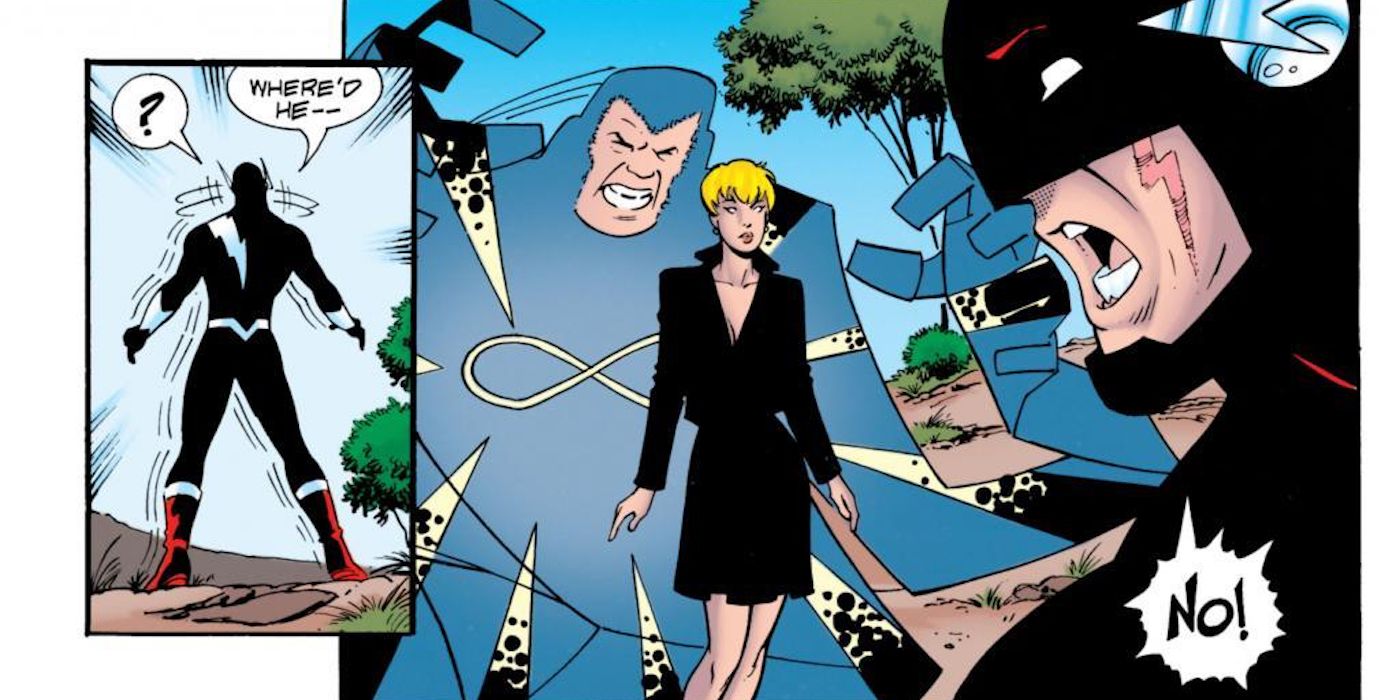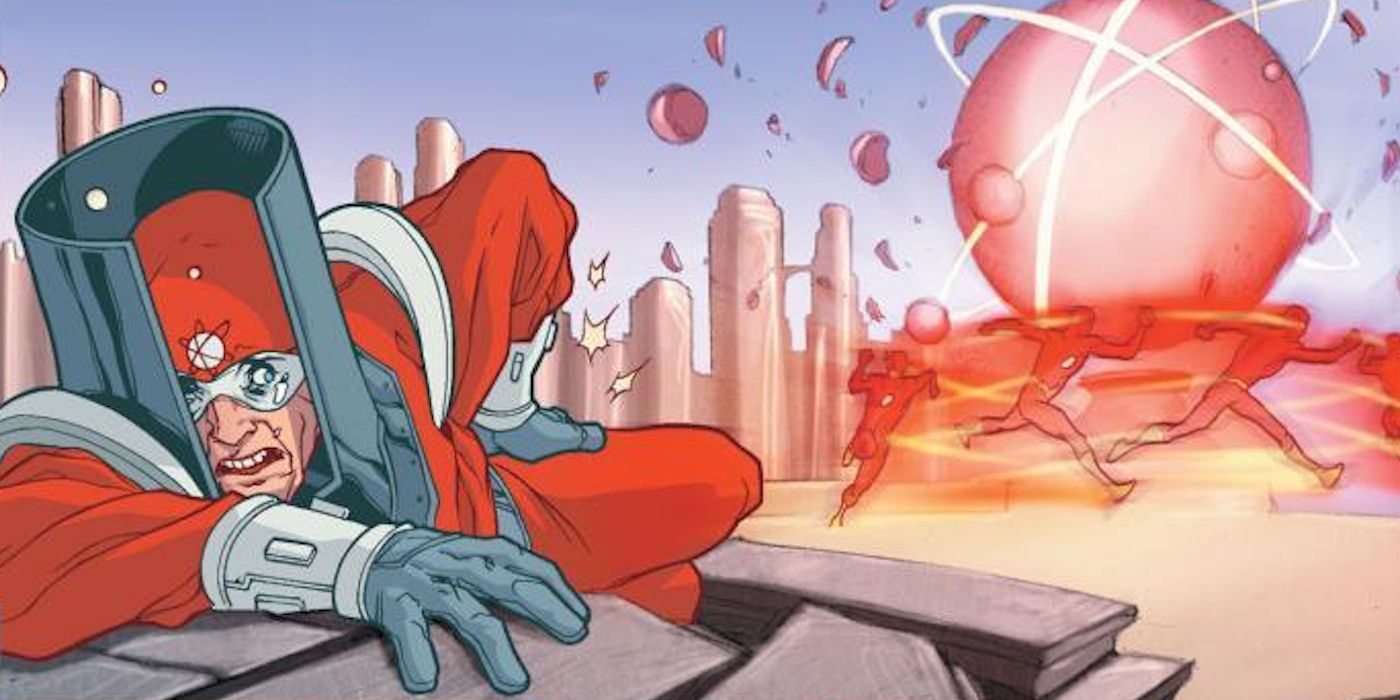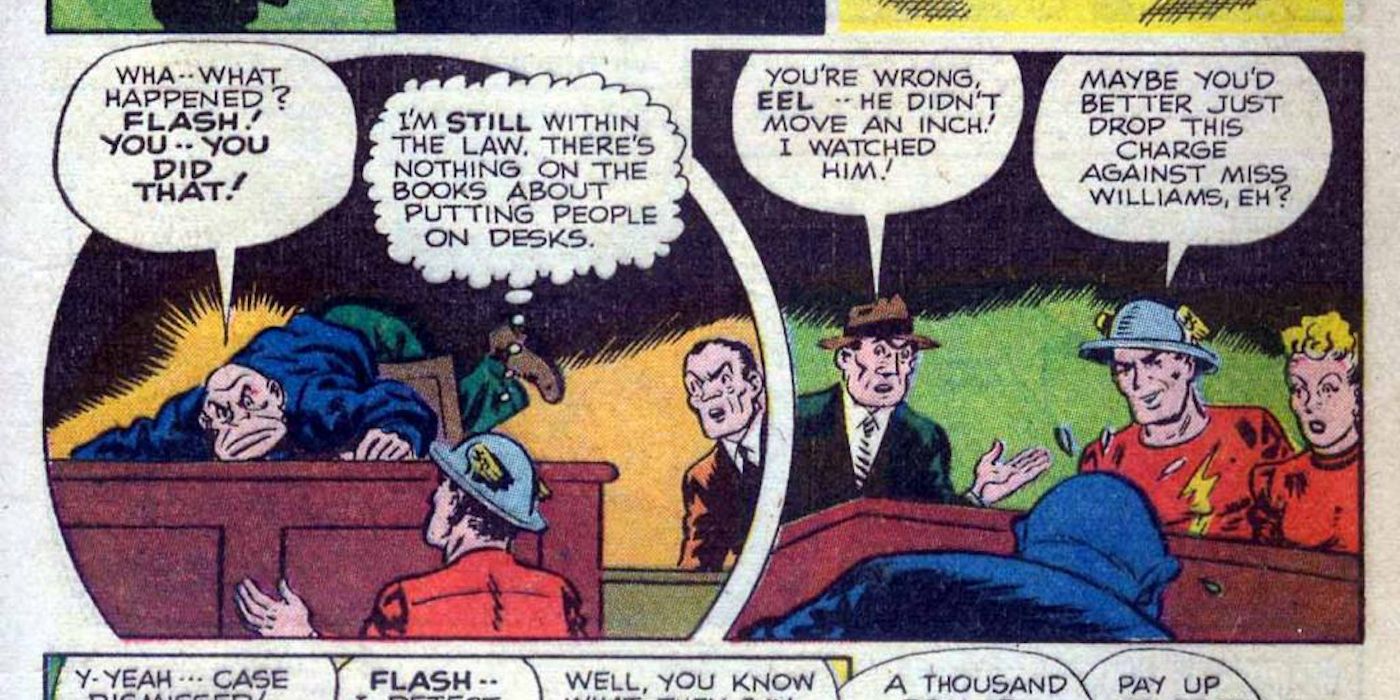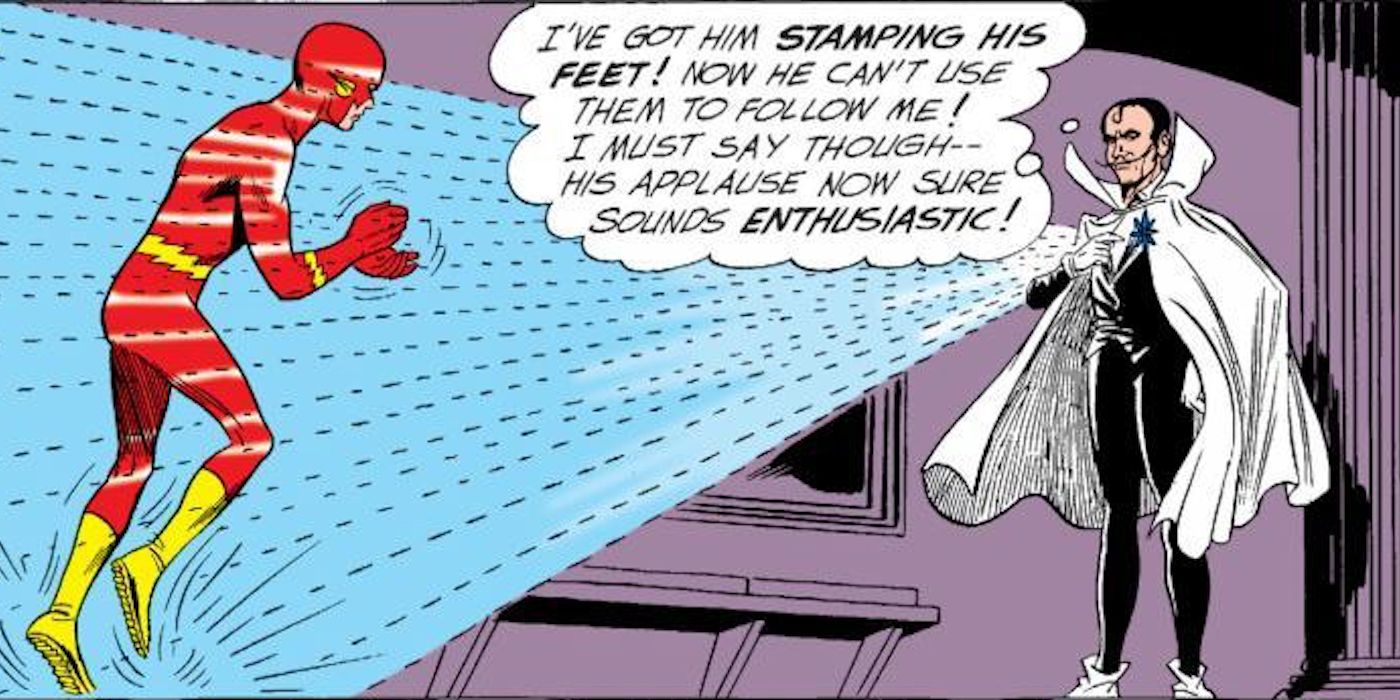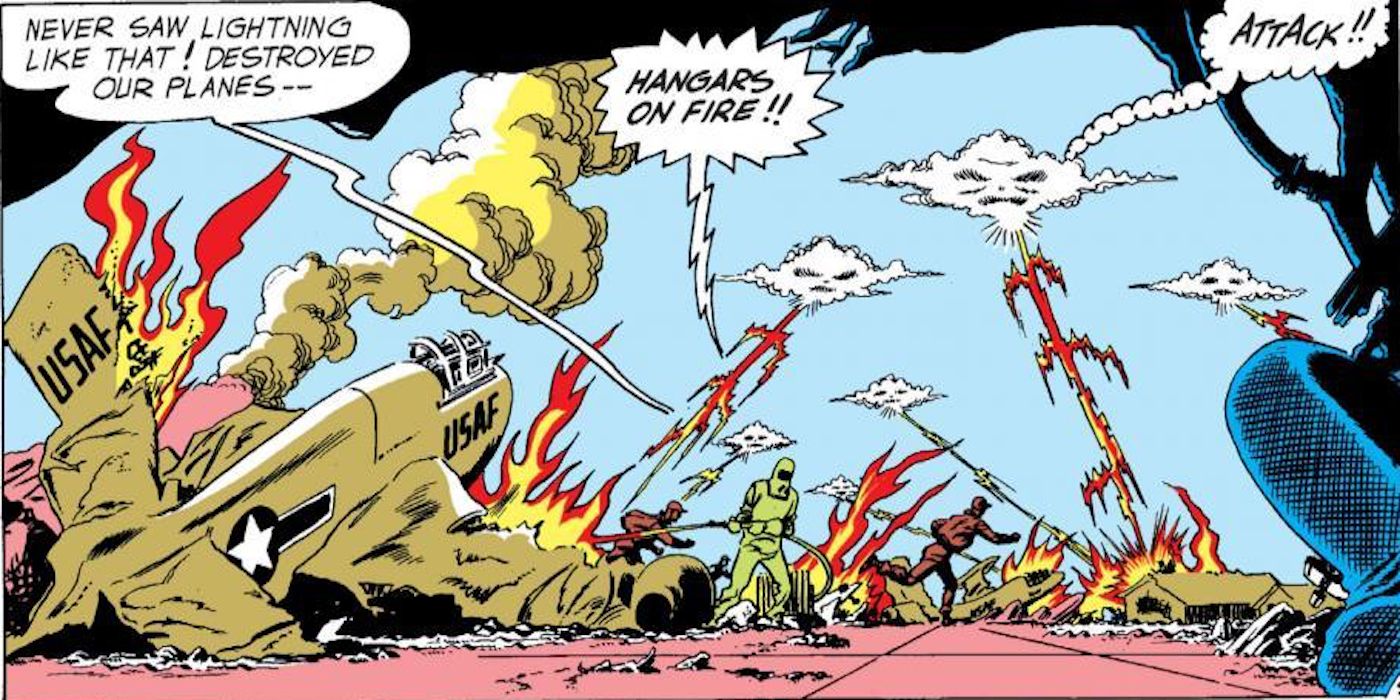In the 76 years since his creation, the Flash has amassed an impressive roster of rogues to fight and defeat. Unfortunately, they aren't impressive so much because of their powers, abilities, or intelligence, but rather because a lot of them are pretty ridiculous. The Justice League animated series even addresses this in the fifth-season episode "Flash and Substance," which has the Scarlet Speedster "defeating" the Trickster by just telling him to turn himself in.
But he lets him finish his beer first.
So we don't quite envy the makers of The CW's Flash series for their job of making some of these villains serious and intimidating. And they've done a great job so far, especially considering what they have to work with. But we're still not sure what they can do with some of the others.
Here are 15 of Flash's silliest adversaries who haven't made their CW debuts yet. Keep in mind that we're excluding ones that are already confirmed for the third season, which starts October 4. So while Mirror Master and Top are completely ridiculous, we're just months away from seeing how they fare in live action.
15. Katmos
Katmos is the final surviving member of a "metallic civilization" that ruled the planet 8 million years ago before a comet almost completely wiped it out. And that make us really sad for Katmos if he weren't such an a-hole.
He starts using his amazing metal-man strength to steal the components he needs for a mind-control beam that will let him enslave humanity. It's a pretty basic plan, really, but in his defense, he's about 80,000 centuries behind on his supervillain plots. And he's even rustier than it seems, because his first go at the ray makes people smarter. That's exactly the opposite of what he's going for, but it's yet another one of those times that a comic-book criminal managed to stumble into something that they could easily turn into millions of legitimate dollars without Flash showing up to wreck the house. But Katmos has hitched his wagon to a star, so he will settle for nothing less than complete dominion over the world.
Because Katmos' iron-based skin is too slippery for Flash to hold onto, the hero ends up trapped inside of a tube in a giant machine that will make him too heavy to move once the sun activates it. But Flash manages to vibrate his feet so quickly that the tube takes off like a rocket. When it lands, the glass breaks, and then Flash just runs over and punches Katmos in the face, ending his brief reign over nothing at all.
14. The Changeling
Erik Razar was a prison inmate whose plot to escape included cutting all power to the building. But something went wrong, and he ended up taking a massive jolt of electricity that inexplicably gave him the power to turn into animals. We don't know, either.
Even worse, the Flash has trouble defeating him because super-speed is no match for an elephant with human intelligence. The hero decides that he should just follow Razar and wait for his opening. And the escaped convict has his own scheme: revenge on Topper Hull, the gangster who framed him. He follows Hull to the waterfront, where he's planning to rob a salvage team working on a sunken wreck.
Razar turns into a shark and attacks, but the Flash is, like, right there, so he rushes in to stop both crimes from happening. After making short work of Topper and his gang, he confronts the Razar-shark, holding the villain's gills closed and punching him repeatedly in the head to make him pass out before he can transform into an octopus. It works; Razar sinks to the bottom, and the Flash returns to the surface having just straight-up murdered the criminal.
13. Cicada
Cicada is a century-old cult leader who wields magical knives capable of siphoning the life force out of anyone they stab. And then he transfers that energy into himself to prolong his own existence, just like a cicada...
We don't know why he calls himself that, but that isn't the only weird thing about him. He started gathering followers after lightning struck him the night he murdered his wife. That bolt was apparently so powerful that it made him capable of inventing the Life Knife, which is not what he actually calls his weapons because that would make too much sense; he'd probably go with something like "the Biscuit." But he also forgot that he actually committed the crime and believes that his mission is to resurrect his loved one using the power he stabs out of his victims.
The villain decides that since both he and the speedster were "baptized by lightning," the hero has been providing him with the lives he needs to make his plan work. He and his cult start tracking down and murdering everyone the hero has ever saved. Flash eventually grants the villain's wish for more power by hitting him with a massive bolt from the Speed Force, and then the police step in and arrest him.
It's pretty anticlimactic, but that's also how we felt when we learned that a bad guy named Cicada didn't have big, transparent wings or fight with an amped-up version of one of the most annoying sounds in nature.
12. Shade
Shade, who has power over darkness, has also fought Starman, but he made his debut in Flash Comics #33 (September 1942) as "The Man Who Commands the Night!"
His plan in that issue involves throwing Keystone City into total darkness and then sending his goons around to police stations with "cosmoray guns" ("They focus the light of the cosmic rays!" The Shade says, explaining nothing). Once there, the thugs fall upon the officers and kidnap them, removing them from the city for two hours so that the gang can go back and rob every bank in town. It's the perfect plan ... by 1942 comic-book standards.
The Flash can't stop this from happening because it's too dark for him to see where he's going at full-speed. But he does find a bunch of dust lying around in a basement and "realizes" that this lack of particulate matter in the air that is causing the perpetual night and failure of all electronic illumination because it doesn't give the sun's rays anything to reflect off of. No, really.
So while the later version of Shade gains his powers from a magical cane that puts him in command of a mass of semi-conscious dark, the original invented the greatest air filtration system in human history. And the Flash ruins his plans by running around in a circle to throw a bunch of dirt into the air.
11. The Fiddler
Fiddler wouldn't even be the first music/sound-based antagonist on the show; we've already seen Hartley Rathaway, also known as Pied Piper, who ditched his hypnotizing flute in favor of some cool gloves that fire sonic waves.
The Fiddler both built his trademark weapon and learned how to play mind-altering, wall-shattering music while he was locked up in an Indian prison. And he used these abilities for crime, even though he could have just patented the technique and made a mountain of legitimate dollars from the construction industry. But then we wouldn't have all of these amazing stories to tell about him.
Stories like the time he staged a series of robberies and then had members of his own gang pose as regular citizens to "thwart" them, all in an attempt to convince the Flash that his crime-stopping services were no longer required. And it actually worked; the then-current incarnation of the hero, Jay Garrick, retired, and then the Fiddler started a massive crime wave that somehow did not convince Garrick that maybe he should maybe dig out his costume again. But he didn't, so it was up to the hero's non-powered girlfriend, Joan Williams, to go out and Flash it up in his place. And after Fiddler defeated her, he tied her to some train tracks -- because that cliché had to come from somewhere.
10. Cobalt Blue
Cobalt Blue, whose real name is Malcolm Thawne, is actually a pretty good candidate for inclusion on the show (and the movie), although he would severely complicate the backstory.
Thawne is Barry Allen's evil twin brother, which is a silly enough idea on its own, but even his birth is overwrought with complications. Henry and Nora Allen arrived at the doctor's office within five minutes of Hugo and Charlene Thawne, with both women in the midst of labor. Dr. Gilmore was too drunk to save the Thawnes' baby when it strangled on its umbilical cord, and he decided that to be fair, he would give one of the Allens' twins to them and tell Malcolm's real parents that he had been stillborn. This is what we call "drunk logic." It's the same thing that makes you think having two quesadillas at 4 a.m. is a good idea, only way more disturbing.
The Thawnes took their new baby and raised him in the family business, by which we mean con artistry and child abuse. His brother went home to loving parents and grew up to be the Flash, which drove Malcolm mad with envy because he believed Barry had stolen "his" life.
Eventually, he learned mystical powers from his adopted grandmother, who was happy that at least one of the Thawnes was willing to apply himself, even if it was to unchecked rage and murder. That's how low the Thawne bar is, apparently. These abilities are contained within a blue gem that gives him the power to create swords made of fire and affect a speedster's use of the Speed Force. This coincidentally makes him a good match for his long-lost brother, so that's pretty neat, if a bit on the silly side.
9. Rag Doll
Like most comic-book characters, Rag Doll has received a darker makeover for the modern age, becoming the leader of a violent cult that does his bidding now that he's too old to commit horrific crimes directly. But his solo criminal career was a bit less than terrifying.
Peter Merkel was born with the fictional condition of "triple-jointedness" because being double-jointed was not a solid (or odd) enough foundation on which to build a rivalry with the Flash. He grew up in a carnival but fell into desperation when it no longer had need of his contortionist and dancing skills, so thievery was the only option that made sense.
What made less sense was his plan: Rather than just robbing a bank like anyone else, he decided to hide inside of one of the large rag dolls in a toy shop, emerging at night to clean the place out. And he goes one further by keeping the disguise on, because it was a simpler time, and people hadn't really caught on to the whole "costumed criminal" thing yet.
One of Rag Doll's first capers involves cheating at a treasure hunt by -- surprise -- hiding inside of a doll to eavesdrop on the participants. And in the end, the Flash turns the thief's flexibility against him by tying his arms in a knot.
8. Mob Rule
Barry Allen's buddy Manuel Lago is a highly trained CIA operative who undergoes experimentation that gives him the ability to regrow lost limbs. As a bonus, any part of his body that separates from the rest will regenerate a fully grown copy of Lago. All of the copies share a telepathic link, and they all possess the complete knowledge and abilities of the original.
The collective group of Lagos calls itself Mob Rule, and it would be an unstoppable force for crime if the duplicates weren't extremely short-lived. The one-man army kidnaps its "father" and sets out to find the scientists in charge of the program that created them. The clones hope that with Lago's unchanged DNA and a little science, they can fix the flaw that kills them off after just a few months of life.
But it's a comic book, and labs rarely go long without exploding; that's how we have the Flash in the first place, after all. The "genome re-coder" overloads, killing Mob Rule but leaving Lago alive to rebuild the team later.
7. Colonel Computron
Basil Nurblin is a toymaker who makes the amazing discoveries in "micro-technics" that made the millions-selling Colonel Computron toy possible. And his boss, Willard W. Wiggins (because comic books), shows his appreciation with a bonus of $99.95, which even in 1981 money was a huge insult.
Nurblin retaliates by donning a life-size Colonel Computron costume and trying to shoot Wiggins with a gun that will transfer him into a deadly, rigged video game. But the speedster manages to dive in front of the electro-bullet just in time, and ends up inside the computer instead. And again, it was 1981, so this game is basically a pixelated version of the Flash bouncing around like the ball in Pong. We're not really sure how this was going to kill him, but we'll defer to the Colonel on this one.
Because the Flash's access to the Speed Force gives him context-sensitive abilities perfectly suited to escaping any predicament he encounters, he's able to escape the game grid and return himself to physical form ... somehow. It doesn't make a lot of sense to us, but as long as the Flash knows how it works, we're going to accept it. Computron escapes through similarly vague means that let him transport himself away, and he goes on to stage some more weird capers.
6. Steve Palmer
Palmer, an actor playing the Flash in a Hollywood movie, isn't even around long enough to come up with a cool supervillain name. But his end goal is to replace Barry Allen and then cash in on the persona before anyone knows he's just a regular guy, so we'd suggest "The Fla$h."
The weirdest thing about this scheme is that it almost works; Palmer and his two collaborators manage to tie the hero up, and it's only when Iris West comes knocking on the door to the trailer that he gets the time he needs to break free. And then he uses his powers to knock his attackers' heads together at lightning speed, which he says doesn't kill him, but we aren't actually sure.
We don't expect to see Palmer show up on the CW, since Warner Bros. is already making a Flash film, and that might be too meta. Plus, his scheme is exceedingly lame.
5. Folded Man
You'd be excused for thinking that Edwin Gauss, The Folded Man, was a product of the mostly ridiculous Golden Age. But you'd be wrong -- he debuted in 1999. And that becomes even less believable the more you know about him.
Gauss is a brilliant quantum physicist who invented a suit that lets him shift between the second, third, and fourth dimensions. You first see this working when police raid his home to arrest him on an outstanding warrant, and he disguises himself as a chart on the wall. His amazing powers of flatness also make him capable of slicing through three-dimensional objects -- like people -- with complete ease.
His access to the fourth dimension (which in this case, is not time) lets him instantly travel between any two points in three-dimensional space. And these are all impressive and potentially terrifying powers, but the name "Folded Man" still makes us snort.
4. Manfred Mota
We have to use this character's real name because he's gone through supervillain personas more often than we change the filters in our water pitchers.
He started out as Atom Smasher -- one version of whom has appeared on the TV series, but it wasn't Mota -- and then he took on the amazing title of Professor Fallout. In that guise, he threatened Keystone City with an atomic bomb before the Flash stopped him. And then, he became Fusionn (not a typo). His main thing is he's a little obsessed with nuclear energy, and he joins a select group of villains who has suffered defeat at a different Flash pretty much every time he's appeared. His criminal enterprises even continue into the 27th Century when he returns as living plutonium. And sure enough, the Scarlet Speedster of that era defeats him once again, seemingly permanently, by using some time chicanery to force him to decay into relatively harmless lead.
We actually think the Flash showrunners could have fun with Mota. Imagine the same guy popping up on the show multiple times in different costumes, and in every appearance, he's sure that this is the one that's going to work. We'd be on board.
3. The Eel
"Eel" Malden was so called because of his trademark gadget, a grease gun that made him too slippery to catch. But his real interests were in civic management.
Eel and his gang hid out in a tiny burg called Pumpkin Center, where the criminal discovers several strange and obsolete laws were still on the books. Seizing the opportunity, Eel starts turning in everyone who fails to serve a raw carrot at every meal or wear something green, and eventually he takes over the town through attrition. The Flash stops him by turning these same odd regulations against him, but Eel wasn't done with this particular scheme.
After his parole from prison, he establishes his own hamlet, Eelton, and starts advertising super-low rent rates to draw people in. But he's also drawn up a bunch of weird rules and immediately cracks down on his new residents for opening their stores too early, not eating lunch exactly at noon, and a bunch of other arbitrary junk. The resulting fines are where Malden's scheme starts to pay off, and the Flash sets out to put an end to this nonsense.
He has a problem, however: he doesn't want to break any laws -- even bizarre ones -- while dispensing justice. So because fighting is illegal in Eelton (is it not in Keystone City?), he can't use physical violence. But he does start exploiting loopholes to harass the town's criminal element. For example, while flinging men into the air is against the rules, nothing says Flash can't tow a buggy full of evildoers down an uneven road.
"Not MY fault if the ground is so bumpy that the wagon springs do the trick," he reasons, adding a "Ha! Ha!" for good measure. Eventually, the constant har-Flash-ment proves just way too annoying for Eel, and he just gives up.
2. Abra Kadabra
Abra Kadabra, whose full name is Abhararakadhararbarakh (and that just looks like someone fell asleep on their keyboard) is an aspiring stage magician from the 64th century. The only problem is that science has become so good at that point that nothing seems like magic anymore.
But Kadabra has the magic inside of him. He knows he does. So he steals a time machine and goes back 4,400 years in search of an audience to impress with his legerdemain. And he packs a backup in case his tricks aren't nearly as cool as he thinks they are.
That contingency is the "Hypno-Ray" stashed in his lapel, which he uses to force people to clap every time he does a trick. And that's probably just cheating at magic. We could think of several legitimate uses for the tech Kadabra is packing, which is capable of both teleportation and flinging objects into space without burning a lot of expensive fuel. But he has a dream, damn it, and he wants to be a celebrity magician.
In his defense, "celebrity magician" was a slightly cooler aspiration in the '60s than it is today, but the people of that time could not even conceive of the exercise in failed rock-magic that was Criss Angel: Mindfreak.
1. Cloud Creatures
We're not even sure where to start on these things.
One day, while studying some lava, Barry Allen sees some clouds up in the air with frowny faces on them. Obviously, this means they're up to no good, so the Fastest Man Alive does the only reasonable thing he can think of: takes pictures of them and leaves the problem for later.
Soon, the grumpy clouds start attacking military bases using lightning and thunder, and then, suddenly, the Flash decides to do something about it. He tries dissipating them with a tornado, but they just float up out of its reach, retaliating by using their own wind powers to pick up a skyscraper and throw it at the speedster.
Flash runs up a nearby hill that has a normal cloud almost touching it and then runs so fast that he can hop between clouds like a stone skipping across a lake, except that what he's doing is (we're not physicists, but...) probably impossible. Once he's up there, he observes a dark spot inside each monster's fluffy body and starts punching each of them in turn. Luckily, the big, obvious weak spot is not just a staple of video games, and his plan works. The Cloud Creatures become rain, and comic-book science wins again.
---
Did we leave out any of your favorite unused Flash villains? Which of these goofballs do you want to see on the small screen? Be sure to let us know in the comments.

